Hyundai Ioniq 5 Vs Ioniq 6 Comparison

"Every EV is the same" just isn't true. Look at this sibling rivalry between the Hyundai Ioniq 5 and Ioniq 6.
Of course, at some level, we already knew this. Both vehicles sit on the E-GMP platform, the one that's also underneath the Kia EV6 and Genesis GV60. Those both feel very different from one another, and from the Ioniq 5 which beat them to market. Hyundai's first dedicated EV has gone on to win numerous awards since debuting in 2022, including our own Electric Vehicle of the Year.
But the Ioniq 6 is that rarest of breeds in 2023: a new car. The first car on the platform, in fact. It also comes wrapped in some very different duds compared to the retro-futurist 5, all smooth curves to maximize range. Even if the mechanicals underneath are the same, the slinky 6 promises a very different experience than the upright 5.
With back-to-back stints in these two as part of the Automobile Journalists Association of Canada's EcoRun 2023, I got to see first hand just how that promise shakes out in real life.
Interior and Cargo Space
Measurement | 2023 Hyundai Ioniq 5 | 2023 Hyundai Ioniq 6 |
|---|---|---|
Front Headroom | 39.1 in / 993 mm | 36.8 in / 935 mm |
Front Legroom | 41.7 in / 1,059 mm | 45.4 in / 1,153 mm |
Rear Headroom | 37.5 in / 953 mm | 38.3 in / 973 mm |
Rear Legroom | 39.4 in / 1,001 mm | 34.7 in / 881 mm |
Cargo Space | 27.2 cu ft / 770 L | 11.2 cu ft / 317 L |
Ioniq 5: The Ioniq 5 cabin is a bright and spacious place, with a slimline dashboard and minimalist detailing. Heavily scalloped doors allow for full elbows-out comfort, too. The design theme is all early-aughts Apple optimism, from the white bezel of the dual screens to the squircle-shaped seat adjusters. Speaking of those seats, the driver can go full recline—with footrest—for those times when a quick nap is needed. The sliding center console is a clever touch, but it does feel a little cheap, and the wired Apple CarPlay and Android Auto means your phone either has a wire bridge, or sits way down in the little footwell cubby, waiting to escape.
Being the more upright model in this comparison, the Ioniq 5 is the more spacious choice—though maybe not quite how you'd expect. It has over two inches of additional headroom over its sibling (39.1 inches / 993 millimeters), but trades that for almost four inches less legroom (a still-huge 41.7 in / 1,059 mm). The front seats are slightly more contoured along their outer edges, but the central sections are softer, more accommodating.
Pop into the rear and surprisingly, it's the 5 with tighter headroom, at least here with both vehicles in their top trims. According to Hyundai there's 37.5 inches (953 mm), slightly less than the Ioniq 6, though the roofline doesn't dip nearly as much. Legroom is the SUV's clearest advantage: 39.4 inches (1,001 mm) is 4.7 in (119 mm) more stretch-out space.
Another advantage: cargo space. That squared-off tail allows for over double the seats-up storage capacity, at 27.2 cubic feet. Fold the seats and it's over double again, ballooning up to 59.3 cu-ft.
Ioniq 6: Hopping into the 6 post-5 is a bit like visiting an old apartment: the structure's the same, but the details are all subtly different. Take the hidden vent design, which now runs across the dashboard uninterrupted, instead of the clone-stamped shape in the SUV. Take in the wings on either side, which house digital side-view mirrors in other markets. There's a thinner metallic bezel surrounding the screens, too.
The big change happens between the seats, with a bridge-style center console for a more traditional cockpit feel. Hyundai has also migrated the window controls here, Wrangler-style, for a clean, proper armrest feel to the doors. Nice.
As we covered above, the 6 doesn't offer as much space for occupants, sacrificing around 3.5 cubic feet (99 liters). Front headroom takes a big hit, with the 36.8 in (935 mm) meaning taller folks will be brushing the headliner. I'm not even that tall (around 5'10"), but a long torso means my hair gets flattened. There is an enormous 45.4 in (1,153 mm) of legroom, however. The seats are deceptive: a less-contoured base belies a better-padded, more supportive seating experience.
Somehow, the Ioniq 6 has the better rear headroom measurement of 38.3 in (973 mm). It gives up a bunch of legroom, offering 34.7 in (881 mm). That's practically the same as the larger Sonata, however.
As you'd expect, the three-box design puts the Ioniq 6 at a storage space disadvantage. There's 11 cubic feet of trunk space; fine for a sedan, but a far shout off from the 5.
Bottom Line: Surprise surprise: the SUV offers more space for people and their things. The interior vibes are similar yet different, both feeling calming and futuristic. But it's a point for the Ioniq 5 all the same.
Hyundai Ioniq 5 vs Ioniq 6: Tech and Features
Ioniq 5: Both of these Hyundai EVs feature the same main infotainment setup, with a pair of 12.3-inch screens sitting upright on the dashboard. Hyundai's latest operating system is easy enough to use, with spaced-out icons and a suitably airy design. A lot of the more granular details need deep dives into sub-sub-menus to adjust, however. As native navigation goes, Hyundai's is right around mid-pack: the learning curve is low, but it's slow to respond. It's the same story for the voice controls.
As the de facto leader of Hyundai's lineup, the Ioniq 5 comes with just about everything the company can throw at it. A 360-degree camera (including the brand's useful Blind Spot View Monitor tech), remote park assist, Highway Driving Assist, a head-up display: it's all here, and it all works seamlessly.
One aspect we don't love: the Bose sound system is merely okay. A seven-speaker setup as the premium option is a little underwhelming at this price point.
Ioniq 6: Read the paragraphs above for the about 95-percent of the Ioniq 6 experience. There are two main differences: the Ioniq 6 joins us all in the present decade with USB-C ports up front (yay!) and ditches the full-recline "relaxation" feature. The wireless charger location is a matter of preference: at the base of the center console, it's easier to reach than the one in the Ioniq 5, but also more clearly in view, and thus a possible distraction.
Bottom Line: No real advantage here, unless you regularly take naps in your car, in which case the Ioniq 5 is the clear choice.
Powertrain, Driving Feel, and Efficiency
Ioniq 5: In dual-motor, all-wheel drive flavor, the Ioniq 5 throws down 320 horsepower and a stout 446 pound-feet of torque. That's enough to get this lil' box to highway speeds in around five seconds, give or take. The go-pedal is well-judged, with a natural level of progression. That's in the default drive mode, anyway; you can make it entirely too touchy in Sport, or lounge lizard-like in Eco. Multiple levels of regenerative braking further tailor the driving experience. I prefer the full i-Pedal setup, which makes for genuine one-pedal progress.
Rolling on big 20-inch alloys, with 255-section tires wrapped around them, the Ioniq 5 exhibits surprising levels of grip for something so eco-conscious. It rides on the stiffer side, more Mustang Mach-E than languid Nissan Ariya. It's comfortable enough around Vancouver's roads, thanks to the low center of gravity keeping it calm, but rough roads do send a lot of vibrations through the back axle.
Officially, the Ioniq 5 is rated at 266 miles of range in the US, and 414 km in Canada. For this event the goal was efficiency, so naturally the leg I drove saw ratings far better than that. In more realistic use, we've found the Ioniq 5 right on target with those official figures.
Ioniq 6: The numbers are the same here. You've got the 320 hp, the 446 lb-ft, the run to 62 mph (100 km/h) in a hair over 5.1 seconds. In that sense, there's little difference between these two, and it translates to the real world. In a straight line, the only difference is the view from behind the (same) steering wheel. Same goes for the braking.
But that overlooks the subtle differences, the ones that make the Ioniq 6 both more efficient and more fun. The streamlined design is ostensibly for aerodynamics, but it shifts the center of gravity even lower. Combine that with a slightly lighter curb weight (4616 versus 4662 pounds), and narrower tires (225 fronts, 245 rears), and the Ioniq 6 is more eager to change directions. It also breathes better with the road, with softer dampening doing nothing to decrease the car's composure. The Ioniq 6 drives with a comfortable maturity that suits a six-figure luxury car.
With these pretty 20-inch alloys, the Ioniq 6 is quoted at 270 miles of range, or 435 km. Switch over to 18s and the rear-drive single motor and those numbers balloons up to 361 and 581, respectively. Even this AWD model was easily beating its quoted figures on the EcoRun route—but again, that's the whole point of the event.
As some of the only EVs on the market with 800-volt architecture, the Ioniq 11 (as this pair will henceforth be known) are capable of plugging into 350-kW DC fast chargers. Both run a 77.4-kWh battery pack. They'll top out at about 235 kW, however, which is still enough to do the 10–80 percent recharge in about 20 minutes. Level 2 charging time is around six and a half hours.
Bottom Line: Both of these EVs do a great job of translating the expected driving experience to the zero-emissions world. Comfortable and efficient, the Ioniq twins should be pleasing to driver and passengers alike. The Ioniq 6 is the better choice for the former, however.
Hyundai Ioniq 5 vs Ioniq 6: Styling
Ioniq 5: Do you remember the neon glow of the local mall arcade? Is Stranger Things a very comfortable walk down memory lane? How about the original Tron? The Ioniq 5 wraps all that retro-futurism up in a package that looks like an old handheld game system and '70s concept cars were merged through an AI prompt. That does the designers a disservice: the Ioniq 5 oozes cool, from the pixel-art lighting elements to the wildly intricate wheel design. We wish it came in more colors, but of everything rolling around our roads these days, this one's near-monochromatic selection makes the most sense.
Ioniq 6: If anybody expected a squished 5 motif here, well, sorry. The 6 takes sandpaper to the 5's straight lines, curving everything in the name of cheating the wind. It's fussy, and no doubt more polarizing, but I will say that it works better in person—especially in the red I first drove it in. It's a deceptively large car, some nine inches longer than the SUV. One thing it shares with its sibling, however: the Ioniq 6 looks like nothing else on the road.
Bottom Line: More than just about any other comparison we've done in years, these two couldn't look more different. I won't pretend to predict your preferences, but I will say that, over the course of my time with both, it was the Ioniq 5 that proved more consistently people-pleasing, if that matters.
Pricing and Value
Ioniq 5: Buying a top-shelf Ioniq 5—dubbed Limited in the US, and the Ultimate package in Canada—will run buyers $53,935 ($62,924 CAD). The only other cost-option from there is premium paint. The Ioniq 5 is still eligible for federal and provincial incentives in Canada, too.
Ioniq 6: In America, where the Ioniq 6 Limited has the same list price but a lower delivery fee from the Ioniq 5, it lists for $53,715. Huzzah!
Canada isn't so lucky. The Ioniq 6 Ultimate comes with a $3,000 surcharge over the top-shelf Ioniq 5, which puts it at a tougher-to-swallow $65,924. Boo.
Bottom Line: In the US of A, where there's no real price difference between these two, it's naturally a draw. We don't get the pricey penalty for Canadian Ioniq 6 models—that might just make it an even rarer sight on the roads.
Verdict: Hyundai Ioniq 5 vs Ioniq 6 Comparison
As you might've expected, there is only one clear winner here: Hyundai.
And customers. Both of these all-electric models nail their design briefs: bring smart, interesting, and covetable models to mainstream buyers looking to ditch the dino juice. No matter which one you pick, the Ioniq twins are fun to drive, be in, and look at.
For staunch car lovers like myself, the appeal of the higher number is strong. The Ioniq 6 is a bit like a budget Porsche Taycan: stylish, engaging, and more efficient than its official figures suggest. I like the look, too.
I love the look of the Ioniq 5, however. 18 months on and it's still a design peak for me. Its more commodious design is sure to resonate with more buyers, too: even Hyundai admits the 6 will be a relative rarity against the 5. If you regularly need to cart stuff or additional folks, the Ioniq 5 just makes more sense.
I don't, though, and that's enough to make the Ioniq 6 my personal winner.
Become an AutoGuide insider. Get the latest from the automotive world first by subscribing to our newsletter here.

Kyle began his automotive obsession before he even started school, courtesy of a remote control Porsche and various LEGO sets. He later studied advertising and graphic design at Humber College, which led him to writing about cars (both real and digital). He is now a proud member of the Automobile Journalists Association of Canada (AJAC), where he was the Journalist of the Year runner-up for 2021.
More by Kyle Patrick



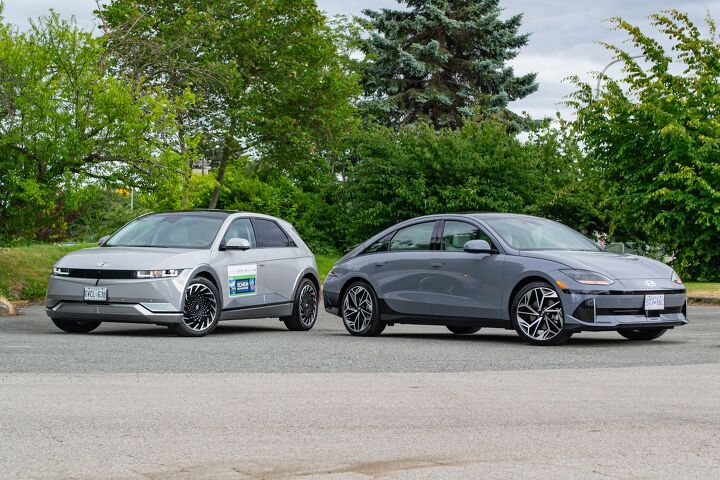
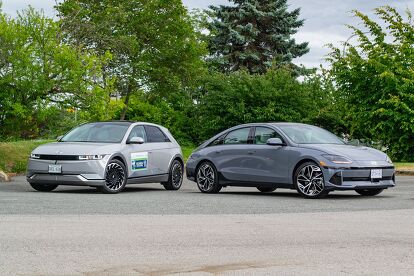















































































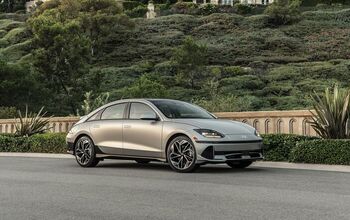

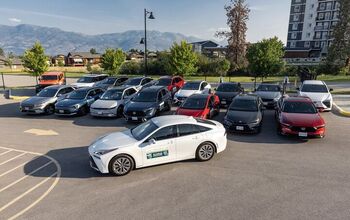

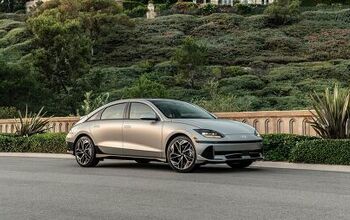













Comments
Join the conversation